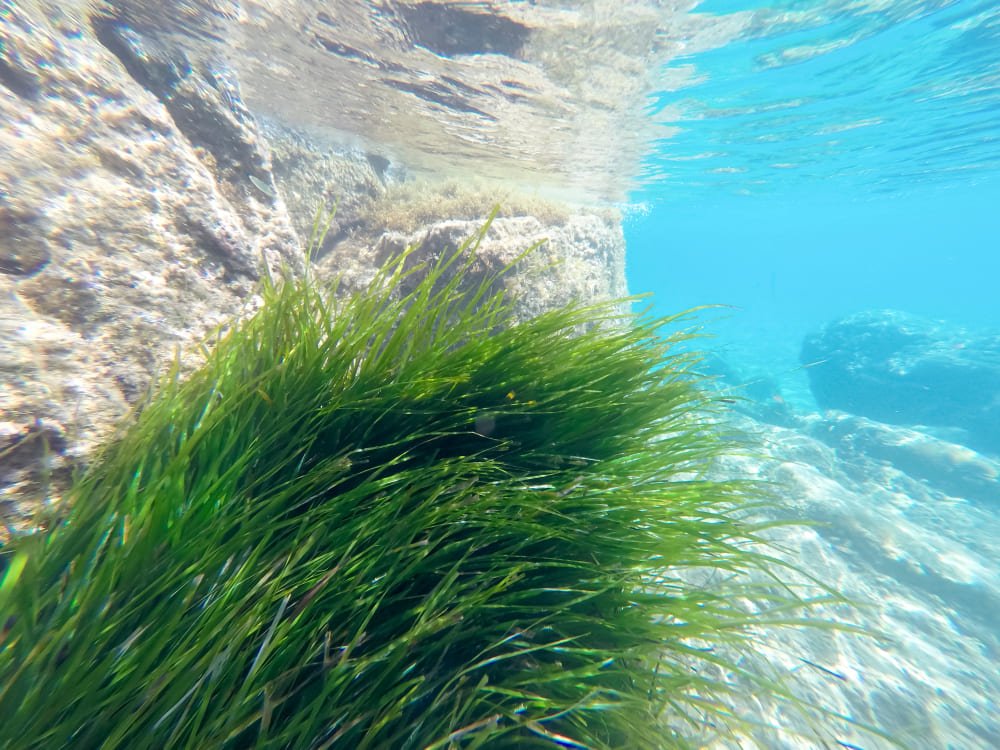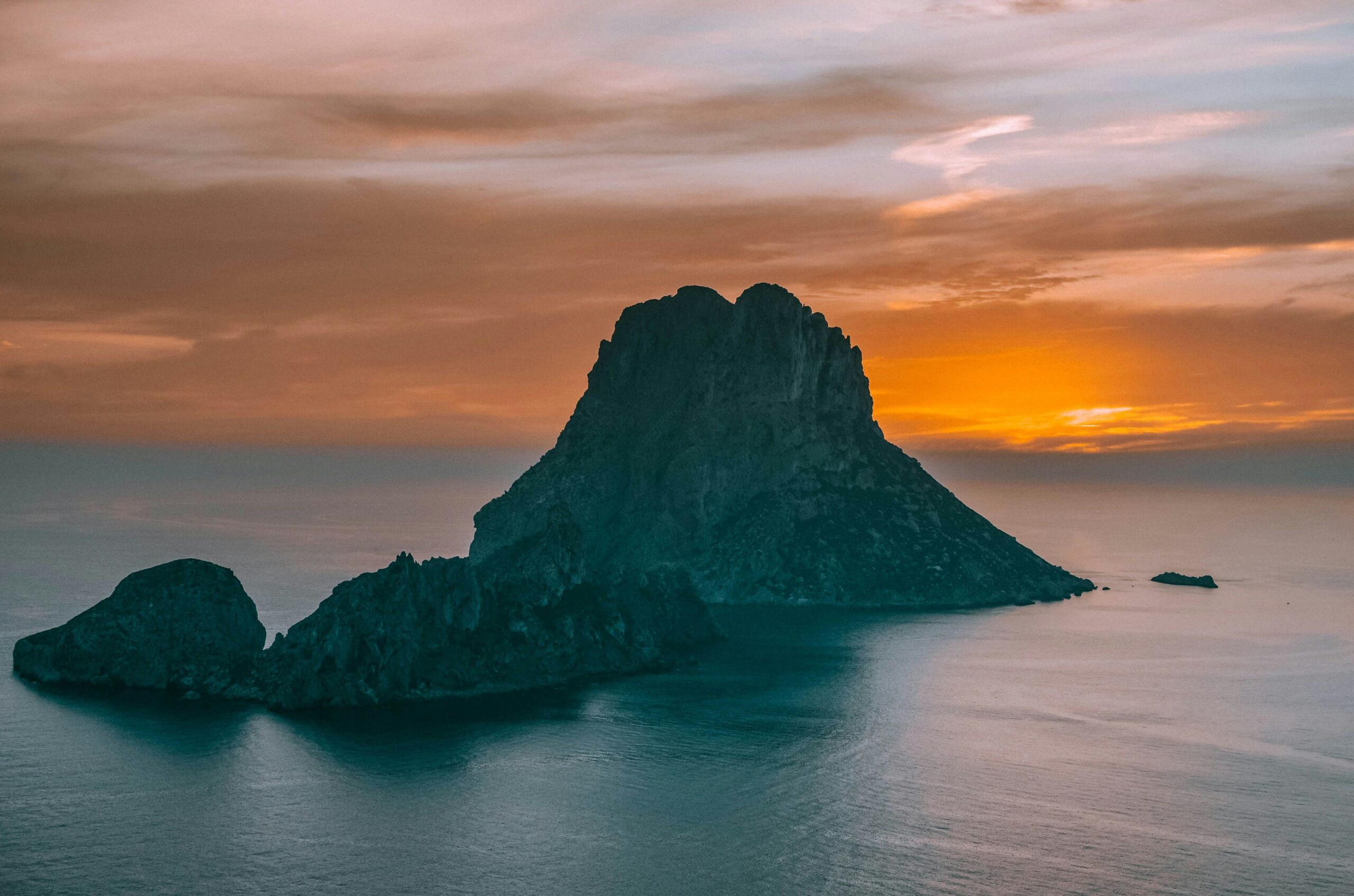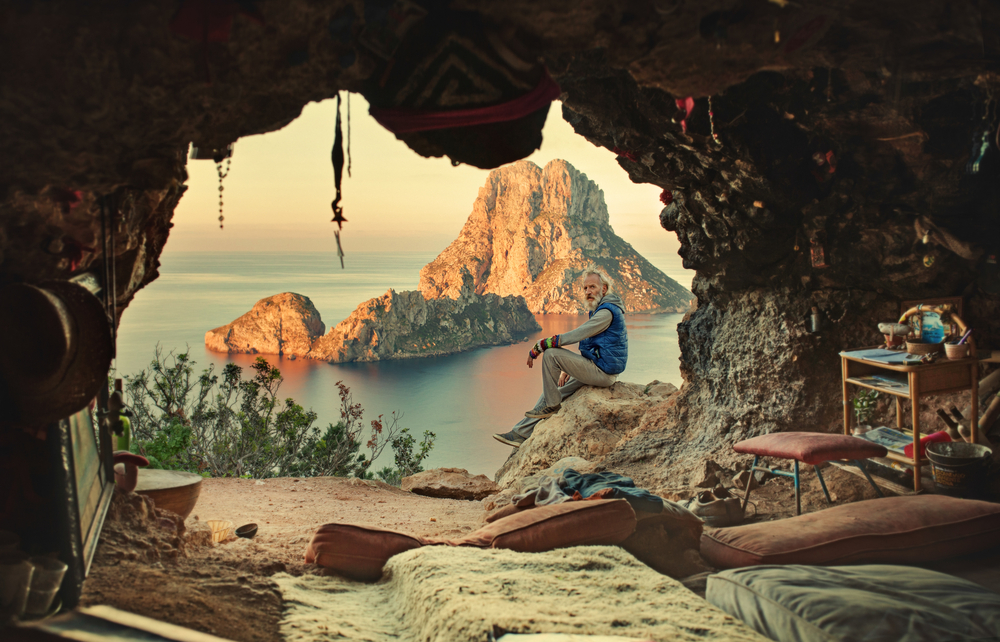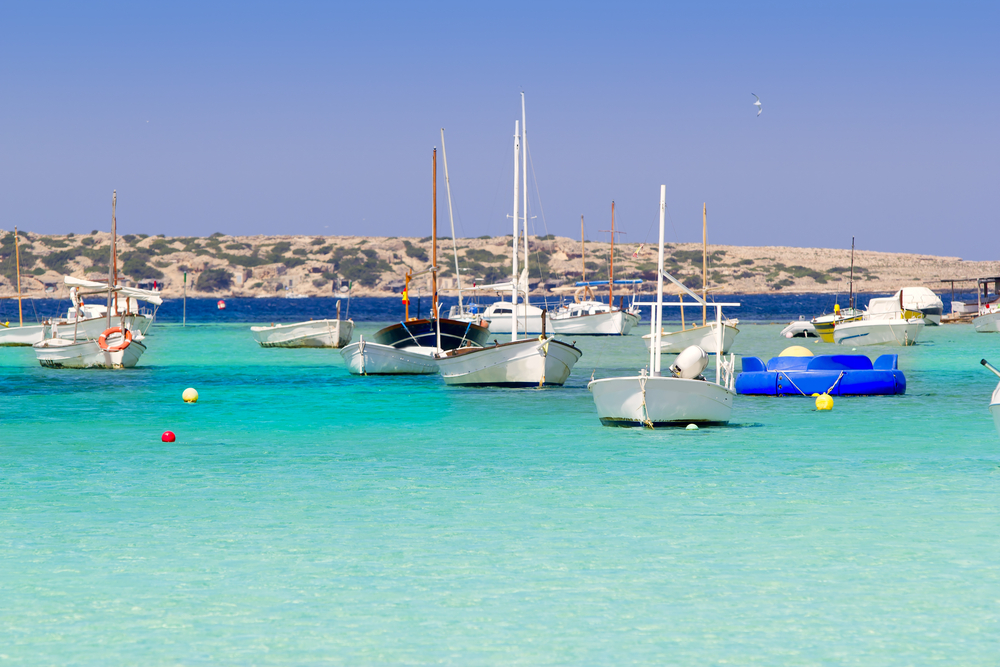Ibiza is the most authentic and most visited island by both national and international tourists. It has never gone out of fashion, and that’s because it has everything: crystal-clear beaches, rich history, and tons of fun… and even though you might think you know it well, there is always something that will surprise you: its history, its cuisine, and even its myths. Are you ready to discover Ibiza and some of the secrets it hides? Here are 10 fun facts about the White Island:
Discover Ibiza: The Coast
Ibiza has more coastline than the province of Barcelona. It may seem small at first glance, but the island has a total length of 210 kilometers, compared to Barcelona’s 151 kilometers of coastline. The sea in Ibiza is one of the must-see spots during a getaway to the Balearic Islands. From exploring the Ses Salines Natural Park to visiting Sant Josep de Sa Talaia, the island of Es Vedrà, or the municipality of San Antonio, where you can enjoy the best coves and crystal-clear beaches on the island.
Ibiza, a UNESCO World Heritage Site
Ibiza has four UNESCO World Heritage sites: the walled city of Ibiza, the remains of the Phoenician settlement of Sa Caleta, the Punic necropolis of Puig des Molins, and the seagrass meadows of Posidonia oceanica. It’s undoubtedly a treasure trove of history that is worth exploring. Stroll through the charming streets of Dalt Vila, visit museums, different villages, or archaeological sites. The old town of Ibiza, Dalt Vila, was the first to be recognized in 1999. Puig des Molins (Hill of Mills) is the largest and best-preserved necropolis in the entire Mediterranean, with around 3,000 tombs, 340 of which can be viewed from the outside.
Posidonia oceanica is the fourth element recognized as part of Ibiza’s UNESCO World Heritage status. The seagrass meadows of Posidonia oceanica are the largest and longest-living organism on the planet. Those in Ibiza and Formentera are some of the best-preserved in the Mediterranean. Moreover, they play a vital role in the ecosystem, oxygenating and filtering the water, reducing the erosive power of the waves, and thus protecting the fabulous beaches of the archipelago.

The Es Vedrà island
There are many myths surrounding the island of Es Vedrà. It is said that, between the southwest of Mallorca, Ifach (Alicante), and Es Vedrà (Ibiza), navigation systems suffer malfunctions and interference, just like in the Bermuda Triangle. It was even believed to be the home of the sirens from Greek mythology, who lured sailors to their deaths with their song. In addition to the myths, Es Vedrà is considered the third most magnetic place in the world due to the minerals that interfere with the magnetic field.
If you visit the island of Ibiza, you must go and see it. Cala d’Hort Beach is a great spot to admire it, but there are also viewpoints from the mountain. Another excellent way to see it is from the sea on one of the many boat tours that pass by or approach it, or you can rent a boat if you prefer.

Why the “White Island”?
The island of Ibiza is also known as the “White Island,” and there is a reason behind this. On the island, it was customary to whitewash houses with lime a couple of times a year to protect the clay used in construction. Over time, this whitewashing transcended its original purpose and became a distinctive feature of the Ibizan landscape. The white houses in Ibiza are an important part of its aesthetic and culture, reflecting its identity.
Ibiza Salt
You’ve probably heard of Ibiza salt. The island is famous for its salt, which was once one of the most important industries. It can be found in the Ses Salines Natural Park, a natural space since 600 BC, where it was considered one of the most prized possessions of Ibiza. Today, it is easily accessible for visits and is one of the best spots for hiking or watching the sunset surrounded by nature. Nowadays, Ibiza salt has transcended its culinary value and has become an iconic symbol for visitors.
The Hippie World
The movie More, entirely soundtracked by the American band Pink Floyd, was set in Ibiza and helped make the island even more famous for its hippie character. Filming began in 1969 when the hippie phenomenon was at its peak. Until the late 60s, Ibiza was a rural island, the poorest in Spain, where cereals were ground in mills, salt was harvested, and the population lived from subsistence fishing and farming. The island’s tranquility attracted many hippies from all over the world, drawn by the ideal of a more natural way of life.

Ibizan Herbs
The island of Ibiza is known for certain local products that you must try on your next visit to the White Island. One of these is Hierbas Ibicencas, a traditional liquor from Ibiza and Formentera by Juan Mari Mayans. It is a typical drink enjoyed either in a glass or as a shot at the end of a meal. The production is entirely artisanal, using technological advancements for quality control and production standards. The process of making Hierbas involves distillation, boiling, infusion, and maceration.
The Pitiusas Islands
The islands of Ibiza and Formentera are known as the “Pitiusas.” This name comes from the Greek word “Pitys,” which means “pine forest,” referring to a type of shrub that was once abundant on both islands.

Ibiza offers a variety of accommodations throughout the island, and if you’re looking for great value for money while being very close to the sea, then the hotels in Ibiza by Vibra Hotels are your ideal choice. With hotels in Ibiza city, San Antonio, and San Antonio Bay, you’ll be able to enjoy the pleasures of the island and discover all the fascinating things it has to offer.
We look forward to welcoming you to Ibiza!


